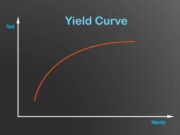What is ‘Past Due Balance Method’
A system for calculating interest charges based on any outstanding loan or credit charges that remain unpaid after a certain date. The past due balance method is used by credit companies whereby credit card holders have until a specified date to pay balances off before beginning to accrue interest fees. For example, if a credit card holder uses their card for daily purchases, the credit card company will offer a grace period during which no interest accrues. If balances are paid by this date, no interest accrues; if balances or a portion of the balance is not paid by this date, interest will begin to accrue.
Explaining ‘Past Due Balance Method’
Credit card companies use the past due balance method because it would be impractical to use a credit card and pay interest immediately on purchases. This method allows balances to remain unpaid until a specified due date, after which the balance would start to accrue interest. Balances on credit cards typically become due once each month and after this date the balance becomes past due, thus the past due balance method.
Further Reading
- The affordable care act Medicaid expansions and personal finance – journals.sagepub.com [PDF]
- System and method for facilitating reciprocative small business financial information exchanges – patents.google.com [PDF]
- Quantitative methods in credit management: a survey – pubsonline.informs.org [PDF]
- Estimating groundwater recharge using the chloride mass-balance method in the West Bank, Palestine – www.tandfonline.com [PDF]
- Non-performing loans: What matters in addition to the economic cycle? – papers.ssrn.com [PDF]
- Bank balance sheets and the transmission of financial shocks to borrowers: evidence from the 2007-2008 crisis – papers.ssrn.com [PDF]
- A network formulation of the power balance method for high-frequency coupling – www.tandfonline.com [PDF]


































